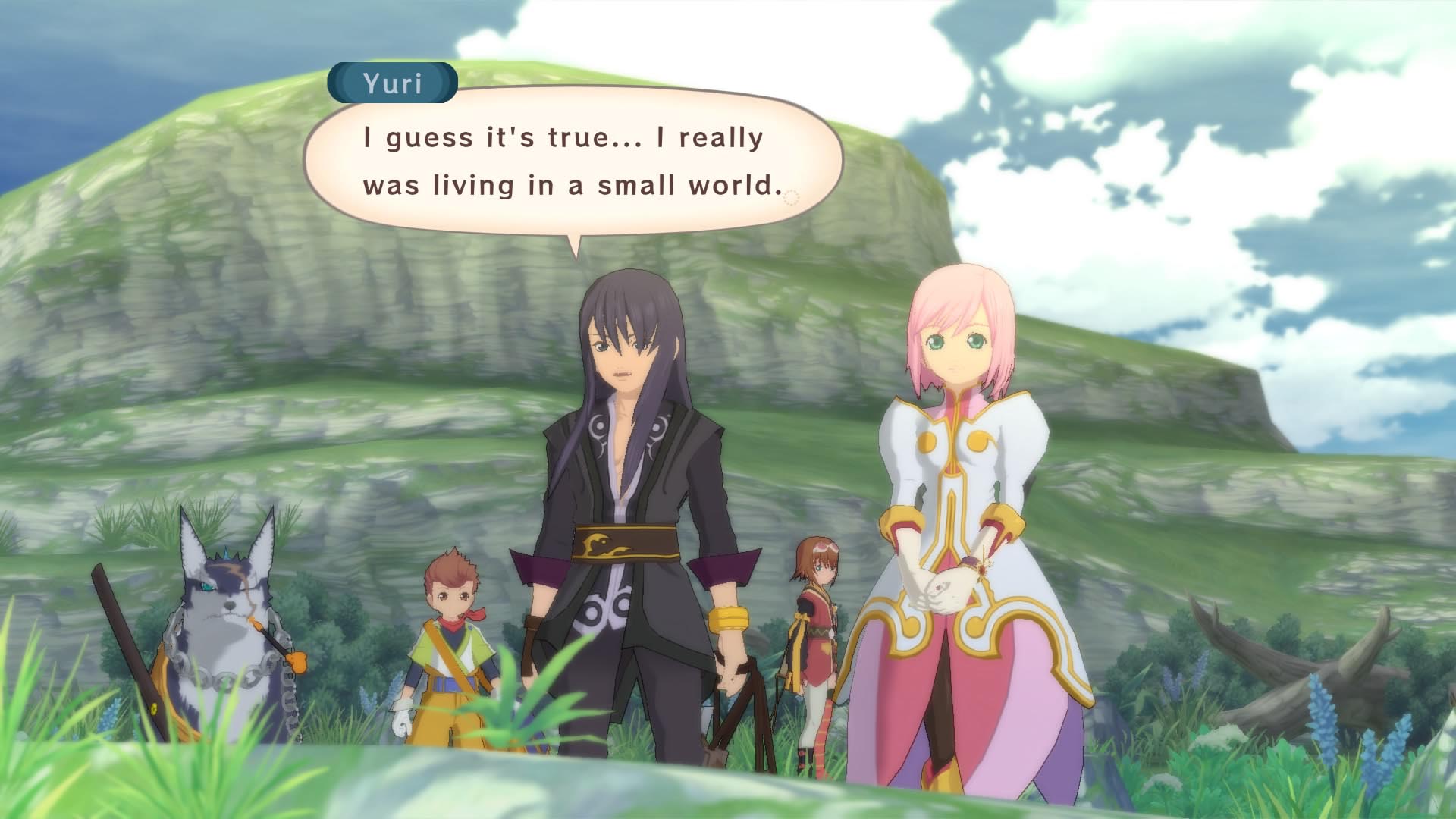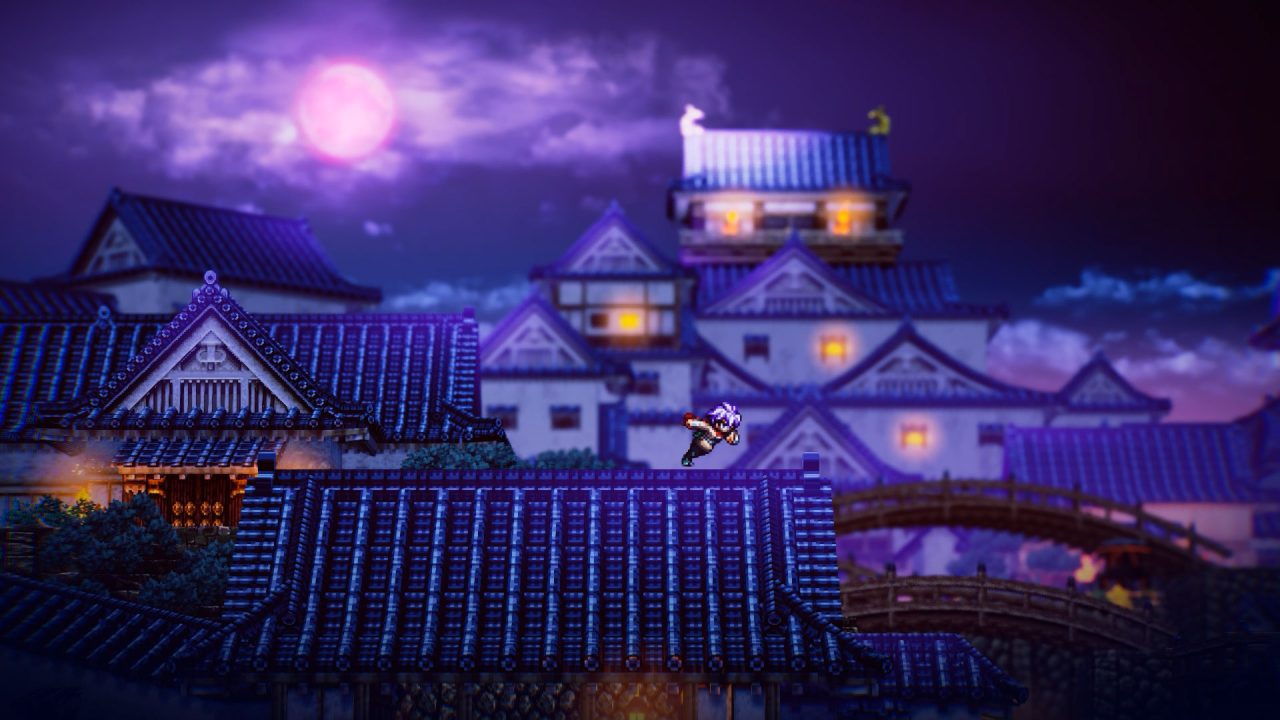1. Tales of Vesperia
The Tales series has never had the production value of some Square Enix titles, but what they lack in spectacle, they make up for with some of the best casts in the genre. The famous skit feature ensures that you remember every party member and their relationships with each other. There are several RPGs with casts I adore, but few compare to Tales of Vesperia. The cast and their arcs are among the series’ best, alongside a gripping story and top-of-the-line combat. Yuri Lowell and friends struggle with ideas of justice and retribution in meaningful and thematically rich ways that I’ve only appreciated more as I’ve gotten older. Vesperia comes from an era before (sometimes missable) sidequests were clearly marked, so I can only play it with a guide. That said, I find the lack of signposting strangely charming in a way I can’t quite describe, and it may be why I’m drawn to many older RPGs today.
2. Final Fantasy VII
While it took me longer than it should have to complete, Final Fantasy VII remains a tremendous example of a game that has earned its legendary reputation. One of FFVII‘s most laudable elements is its structure. The way its plot weaves between grand, iconic setpieces, lighthearted fun, and intimate character drama is masterful. It helped me understand how the arrangement of those elements contributed to a well-constructed plot, and even when stretched out to the length of several full games, it still maintains much of the charm it did in the PS1 era. The multilayered story covers themes from self-acceptance and the effects of colonization to environmentalism and dealing with loss. Cloud Strife is often mislabeled as a shallow, brooding badass, but his human vulnerabilities make him a great protagonist. And everything is punctuated by an all-time great soundtrack that compliments it every step of the way. Make no mistake, Final Fantasy VII is worth the hype.
3. Bloodborne
I bounced off of Dark Souls before giving Bloodborne a try. I mostly remember thinking, “This is gonna take a while,” but I found a game that appealed to me by offering a great challenge, with a world and atmosphere that put many ostensible horror games I’d played to shame. Bloodborne‘s world is well-designed and easily navigable, but unrelentingly hostile with horrific creatures at every turn, and you’ll die often no matter how optimized you think your build is. However, the brilliantly designed combat rewards aggressiveness, allowing you to heal damage by quickly responding with your own attacks. And while the story is obtuse, as is customary in FromSoft games, what’s there to unravel only elevates Bloodborne further. All of these elements instilled in me a true appreciation, and for that, I’m endlessly grateful for my time in Yarnham and its surrounding locales.
4. The World Ends With You
The World Ends With You, particularly its original Nintendo DS version, is a shining example of themes, gameplay, and aesthetics working to create a game more than the sum of its parts even when those parts are already individually outstanding. TWEWY meshes themes of social isolation, commercialism, trends, fashion, and trust and makes it look easy. It pulls off the herculean feat of developing Neku, its thoroughly unlikable protagonist, so significantly by the end of the game’s first “week” that it feels like he has nowhere to go after. And yet, the rest of his journey is equally, if not more, compelling. The fact that the difficulty in relating to people is conveyed through a slightly unwieldy battle system that requires you to focus on two screens at once is nothing short of genius. Rounding out the package is a story and cast I felt truly attached to, as well as an all-timer soundtrack that you should listen to even if you never play the game.
5. LIVE A LIVE
LIVE A LIVE does not have the most complex battle system. Most of its individual stories, spread across the prehistoric era, Imperial China, present day, and beyond, are not particularly subversive or original. And yet, despite all that, the way these stories parallel each other and the monumental finale is worthy of all the praise I can give. It also helps that LIVE A LIVE features an early Yoko Shimomura soundtrack that slaps as hard as you would imagine. It may be a simple game, but LIVE A LIVE knows how to make its stories hit harder than they have any right to. Seeing the journeys of each character coalesce in their final stand against their tragic enemy is transcendent. While the quality-of-life improvements of the HD-2D remake may seem slightly at odds with some of the more archaic elements it retains, it is still an excellent way to experience this story.
Non-RPG 1: Resident Evil 4
Resident Evil 4 is about as close to perfect as a game can get. While I understand it would probably be untenable to release a shooter where you couldn’t move and shoot simultaneously, I’m thankful this game exists to show how well that idea can work. Turning the player’s means of attack into a state of such incredible vulnerability — thus necessitating skill in navigating its excellently designed battle arenas — is a risky move that paid off tremendously. I’ve been a massive Devil May Cry fan for a good chunk of my life, but Resident Evil 4 taught me that it isn’t just the depth of your moveset that elevates combat, but how you use your options. By balancing the increased focus on action with an oppressive atmosphere and next-level sound design, Capcom created a game that stands tall even compared to its remake.
Non-RPG 2: 999: Nine Hours, Nine People, Nine Doors
Kotaro Uchikoshi is a writer who seems fine-tuned to play to my exact tastes. His characters are quirky and idiosyncratic without ever being annoying. His plots are twisting and bizarre without being incoherent. And most importantly, he seems genuinely interested in using games as a medium to tell stories that wouldn’t land quite as hard without the interactive element. 999 perfectly encapsulates all these elements, following nine captives of the mysterious assailant “Zero” as they attempt to escape a Titanic replica before it sinks. What initially seems like a series of room escape puzzles with a hint of intrigue quickly turns into a mind-bending mesh of various sci-fi concepts and narrative twists that will floor you (even if some of them get spoiled). I knew full well who Zero was before I reached the ending, and was still utterly amazed by it. To this day, I cannot think of a higher compliment to Uchikoshi for pulling off something so spectacular.





